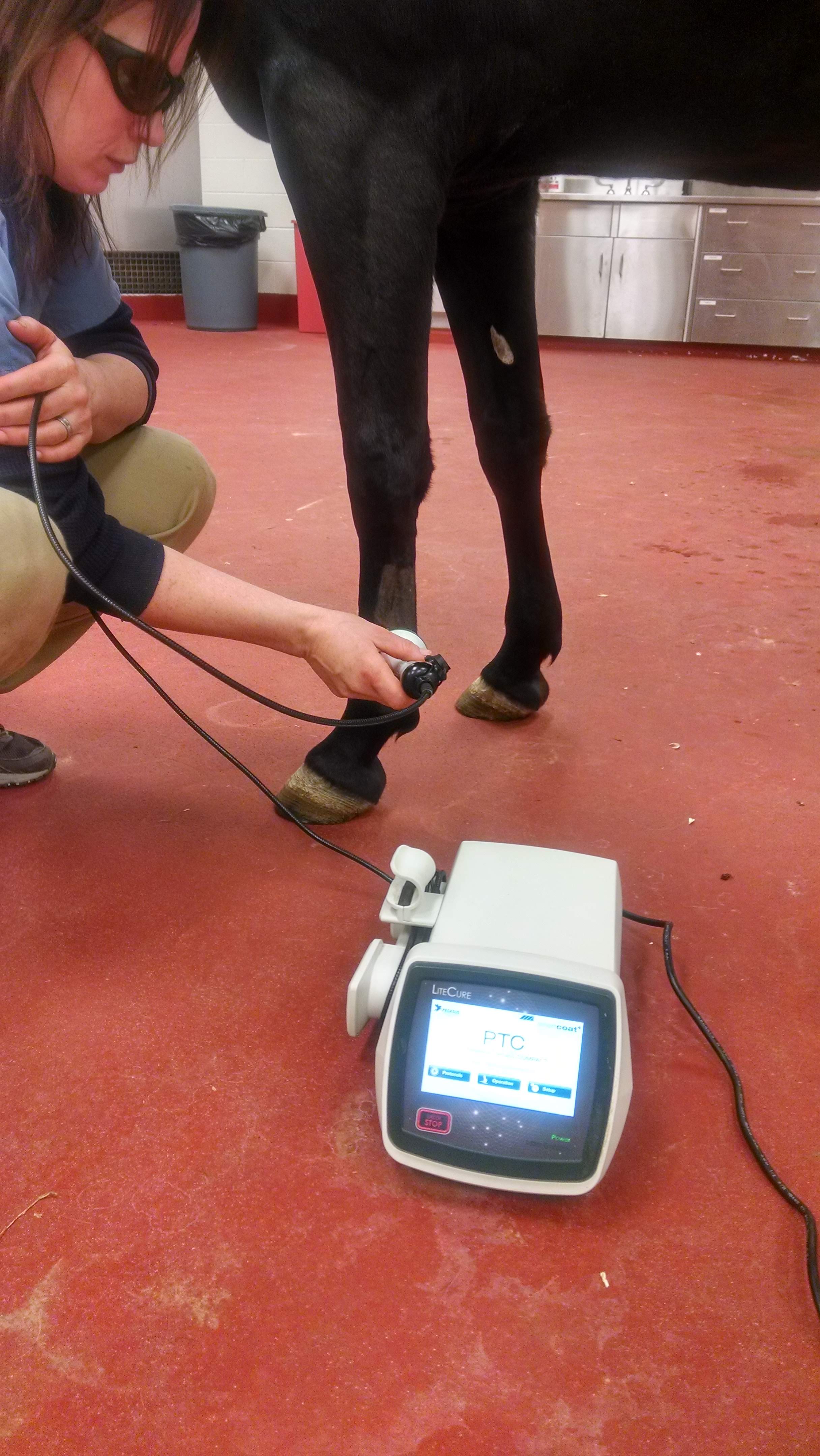Equine Therapy: Exactly How It Helps Build Confidence and Psychological Toughness
Wiki Article
Just How Laser Therapy in Horse Treatment Is Reinventing Vet Care for Steeds
Laser therapy has arised as a transformative strategy in equine veterinary treatment, supplying a non-invasive option that speeds up healing and enhances total health and wellness. The mobility and convenience of laser therapy gadgets even more emphasize their expanding indispensability among vets.
Comprehending Laser Treatment
Understanding laser therapy is crucial for valuing its role in equine treatment. Laser therapy, also referred to as photobiomodulation, entails the application of specific wavelengths of light to tissues, which can lead to various organic effects. This healing modality utilizes the power of light energy to penetrate the skin and underlying tissues, promoting mobile procedures and improving tissue repair work.The innovation behind laser therapy is based in the principle of photochemistry, where photons are taken in by chromophores within cells, leading to boosted ATP production and modulation of reactive oxygen types. This, subsequently, promotes cellular spreading, decreases inflammation, and speeds up healing. Vet practitioners use various types of lasers, including low-level lasers (LLLT) and high-power Course IV lasers, depending on the specific healing purposes and the nature of the equine condition being dealt with.
Different laser wavelengths and power settings are thoroughly picked to target various cells depths and attain preferred clinical outcomes. Security methods are extremely important, as improper usage can result in thermal damage or suboptimal healing impacts. Thus, a detailed understanding of laser therapy's systems and applications is vital for its reliable execution in equine vet method.
Benefits for Horse Wellness
The myriad advantages of laser therapy for equine wellness include enhanced recovery, discomfort reduction, and improved wheelchair. This advanced treatment technique leverages specific wavelengths of light to permeate tissues, promoting cellular feature and promoting quick tissue fixing. The non-invasive nature of laser therapy guarantees minimal stress and anxiety and pain for the equine, helping with a smoother healing process.
Improved wheelchair is an additional vital advantage, particularly for efficiency and functioning steeds. By reducing swelling and discomfort, and boosting tissue repair work, laser treatment helps in recovering joint function and muscle mass adaptability. The advancing impact of these advantages is not just a quicker return to typical activity but additionally an overall enhancement in the steed's high quality of life. Hence, laser therapy stands as a transformative device in contemporary equine veterinary care.
Typical Problems Dealt With
Laser therapy has actually arised as a functional treatment alternative for a selection of typical equine conditions. Additionally, laser treatment is effective for conditions like osteoarthritis, where it aids minimize joint Read Full Article swelling and advertise tissue repair work.Wound monitoring is another area where laser treatment has actually revealed significant assurance. Persistent injuries or slow-healing abscess can be specifically difficult in horses, yet laser treatment improves cellular regrowth and enhances blood circulation, thus accelerating the healing process. Laser treatments have been effectively utilized in managing hoof problems such as laminitis and abscesses, alleviating discomfort and promoting quicker recovery.
Equine professional athletes frequently experience performance-related problems like muscular tissue soreness and anxiety fractures. Laser therapy aids in decreasing muscle tiredness and expedites the recuperation of micro-injuries, hence making sure that equines return to come to a head performance more promptly. By dealing with these diverse conditions, laser treatment is changing the landscape of vet treatment, offering a non-invasive, effective alternative to traditional treatments.
Modern Technology Behind Laser Therapy

Laser tools our website used in vet medication commonly utilize low-level laser therapy (LLLT) or chilly laser treatment. Unlike high-powered medical lasers, these devices operate at lower power degrees, optimizing healing advantages while minimizing thermal damages. The energy from the laser light boosts adenosine triphosphate (ATP) production, improves cellular metabolic process, and speeds up tissue fixing processes.
Modern laser treatment equipment for equine treatment is developed with adjustable settings to satisfy the details demands of various tissues and problems. Equine Therapy. Parameters such as wavelength, power density, and treatment duration can be finely tuned, supplying tailored healing remedies. In addition, improvements in laser technology have brought about the growth of mobile, portable gadgets, making it much easier for vets to provide therapy in a range of setups, from clinics to stables. This technological development is a keystone in the reinventing of equine veterinary care.
Success Stories and Situation Researches
Showcasing the tangible benefits of laser treatment, numerous success stories and case research studies brighten its transformative influence on equine health. One such case involves a purebred racehorse suffering from persistent tendonitis. Typical therapies produced marginal renovation, but after integrating laser therapy into the program, the horse exhibited significant reductions in inflammation and pain within weeks, inevitably going back to affordable auto racing.One more engaging instance includes a dressage equine identified with serious pain Find Out More in the back, limiting its efficiency. A vet group employed low-level laser treatment (LLLT) to target the swollen areas, leading to significant enhancement in flexibility and a noteworthy decrease in discomfort. Over numerous sessions, the steed reclaimed its peak type, showcasing the efficiency of laser treatment in dealing with bone and joint problems.
Additionally, a study carried out at a leading equine facility examined 50 horses with various soft tissue injuries treated with laser treatment. The outcomes were striking: 85% of the equines showed increased healing times and boosted movement. These situations highlight the flexibility and efficiency of laser therapy in equine medication, providing a non-invasive, scientifically-backed approach to boosting recovery and performance in steeds.
Final Thought
Laser treatment is revolutionizing equine vet treatment by supplying a non-invasive therapy that increases healing, decreases inflammation, and reduces discomfort. With its efficiency in treating a series of problems, from musculoskeletal injuries to persistent ailments like osteoarthritis, this modern technology significantly enhances equine health and wellness and wheelchair. The transportability and adaptability of laser therapy further underscore its transformative effect on veterinary techniques, solidifying its role as a vital tool in modern-day equine medical care.Report this wiki page